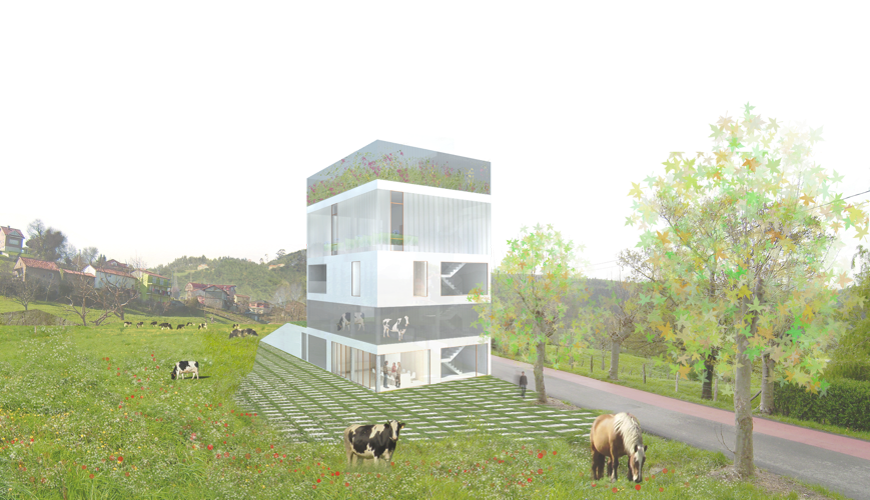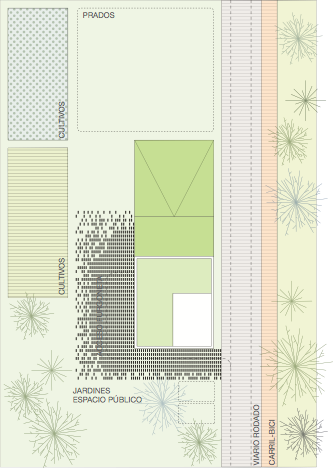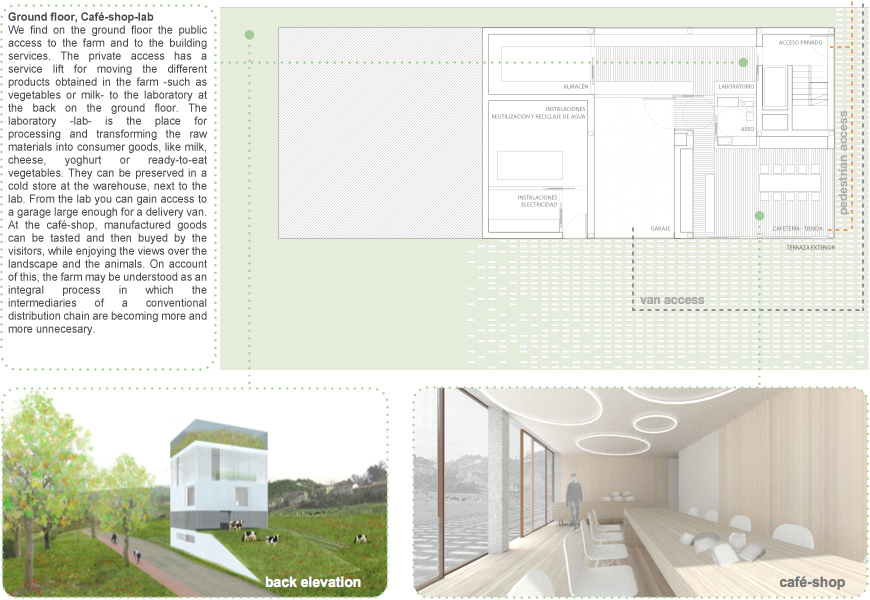project for a single-family home and experimental integrated farming
location: –
total area: 554 m2
year: 2010


Today, most of the conventional farming systems are usually based on an intensive use of the land which transforms the existing soils into others more suitable for harvesting and grazing cattle. That change in the structure of soils is done in accordance with an economic model that, having only in mind an immediate profit, over-exploit the existing natural resources. Unfortunately, after ruining the physical and natural land conditions, it is eventually necessary to increase the total area of soil used for farming to keep the economic returns. In cattle farming, as well in cattle growing, an intensification of this process of soil change increases the energy consumption and contaminates the land with a higher concentration of organic wastes, fertilizers and pesticides, leading to a general impoverishment of the environmental biodiversity. From a social point of view, this intensive model provokes a social fracture due to the enormous financial investment required, preventing many local farmers and ranchers to compete in the market on equal terms. From the use-of-land point of view, this model means a breakup with the traditional rural landscape naturally linked to its environment. Subjected to the natural forces and modified by the human activity, this traditional model keeps up the biodiversity and the edaphic conditions of the soil. Instead, in an intensive farming system the interests are only related to economic criteria, not to the urban fabric or the social or natural environment.
On the other hand, extensive farming is more sustainable and cleaner, environmentally friendly and keeps biodiversity up. However, they aren’t efficient enough and the profits are also higher in intensive farming. How could we combine the advantages of both models?
We propose a scheme of overlapped layers as a possible solution: vegetable garden, greenhouse, housing, cow shed and café-shop-lab. Those layers are usually spread over a ground surface five times bigger than in our solution of overlapping. Thus, the ground occupation is just up to a 20% of the surface used in a more conventional solution. There are two other great advantages: on one hand, it frees up some ground that can be used for extensive farming or extensive cattle breeding -pasture-; on the other hand, it reduces the distance between centers of production -greenhouse, vegetable garden and cattle shed- and centres of transformation and distribution -café, shop and lab-, and therefore the waste in energy resources and transport is kept low.
Our solution has another important advantage: an efficient management of natural resources -water, sunlight, compost-. The farm uses rainwater and recycle the grey water of the apartment -once greases and impurities have been eliminated- for hosing, irrigation and cistern filling; the sunlight for obtaining hot water and stimulating the growing of vegetables in the greenhouse and at the garden; and the compost from the organic remains of vegetables and harvesting to get electricity, gas and heating.





